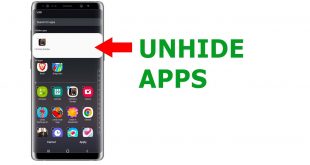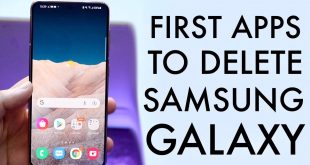The seamless transfer of your favorite digital content from your mobile device to your television offers unparalleled convenience. However, encountering a situation where the projected content falls short of occupying the full screen can be a frustrating experience.
This guide delves into the various underlying causes that contribute to this problem, empowering you to identify and rectify the situation swiftly. By applying the troubleshooting techniques outlined below, you can restore the intended full-screen display, allowing you to fully immerse yourself in your multimedia experience.
Adjust TV Display Settings
Table of Contents
Optimizing your TV’s display settings is crucial for ensuring the best viewing experience when mirroring content from your laptop or mobile device. Proper adjustment can enhance image quality, eliminate screen distortions, and guarantee a seamless fullscreen display.
Resolution:
The resolution determines the number of pixels displayed on your TV screen. Ensure it matches the native resolution of your device for optimal clarity and sharpness. If the resolution is higher than your TV’s maximum, it may result in scaling issues and reduced image quality.
Aspect Ratio:
The aspect ratio defines the proportions of the image displayed on the screen. Adjust it to match the content being mirrored. The options typically include 16:9 for widescreen content, 4:3 for standard-definition content, and various other options for specialized scenarios.
Overscan:
Overscan is a setting that extends the image beyond the edges of the screen. While it can help eliminate black bars around the image, it can also crop essential content. Disable overscan to ensure the entire image is visible and optimally scaled.
Pixel Mapping:
Pixel mapping adjusts the alignment of the pixels on your TV screen to minimize pixelation and improve image sharpness. If you experience distorted or misaligned pixels, adjust the pixel mapping settings.
Optimize Casting Device Settings
Adjusting the settings of your casting device can often resolve issues with fullscreen casting. Here are some options to explore:
Resolution and Frame Rate: Ensure that your casting device’s resolution and frame rate match those of the content you’re casting. This minimizes any potential scaling or aspect ratio issues.
Display Mode: Select the “Fill Screen” or “Fit to Screen” display mode within your device’s casting settings. This will ensure that the content occupies the entire screen, eliminating any black bars.
OverScan: Disable any overscan settings on your casting device. Overscan can crop the edges of the image, resulting in a non-fullscreen display.
Restart Device: In some cases, a simple restart of your casting device can resolve any temporary glitches that may be affecting fullscreen casting.
Ensure Proper HDMI Connection
Establishing a reliable HDMI connection is crucial for a seamless display while streaming or mirroring content to your TV. Inspect the HDMI cable and ensure it is firmly inserted into both the source device and the TV. Replace any damaged or loose cables to prevent signal interruptions.
Update Firmware on TV and Casting Device
To ensure optimal compatibility and resolve any potential display issues, it’s crucial to keep the firmware of your television and casting device up-to-date. Firmware updates often include bug fixes and performance enhancements that can significantly improve the casting experience.
| Device | Update Process |
|---|---|
| Television | Navigate to the TV’s settings menu, select “System Updates,” and follow the on-screen instructions to check for and install updates. |
| Casting Device | Refer to the manufacturer’s instructions for the specific casting device. Typically, updates can be checked and installed through the device’s mobile app or web interface. |
Reset Chromecast or Other Casting Devices
If other troubleshooting methods have failed to resolve your casting issues, resetting your Chromecast or other casting device may be the solution. This process will restore the device to its default settings, potentially eliminating any software glitches or configuration errors that may be causing the issue.
Contact Device Manufacturer for Support
If you’ve tried all the troubleshooting steps outlined above and your projected content is still not displaying in full screen, it’s time to reach out to the manufacturer of the device you’re casting from. They can provide specialized assistance tailored to your specific device and its operating system.
Q&A:
Why is my casted content not displaying full screen on my TV?
There are several possible reasons for this issue. One reason could be incorrect aspect ratio settings on your TV. Another potential cause is that the content you’re casting may have a different resolution than your TV’s native resolution, resulting in black bars around the edges. Additionally, outdated firmware or software on your casting device or TV can also lead to this problem.
How can I fix the aspect ratio issue on my TV to resolve the partial display issue?
To adjust the aspect ratio settings on your TV, navigate to the Display or Picture Settings menu. Look for options such as “Aspect Ratio” or “Screen Fit,” and select the setting that best matches the shape of your TV screen. Common aspect ratio options include 16:9, 4:3, and Fit to Screen.
What should I do if the content I’m casting is a different resolution than my TV?
In such cases, you may need to change the resolution settings on your casting device or TV. On your casting device, check the display or output settings for options to adjust the resolution. On your TV, navigate to the Display Settings menu and look for options to change the input resolution. Match the resolution of your casting device to the native resolution of your TV.
How can I update the firmware on my casting device or TV?
To update the firmware on your casting device, connect it to Wi-Fi and check for updates in the device’s settings menu. For your TV, refer to the manufacturer’s instructions or website for information on how to update the software. Installing the latest firmware updates can often resolve compatibility issues and improve the overall performance of the device.
I’ve tried all the suggested fixes, but my casted content is still not displaying full screen. What else can I do?
If the issue persists after attempting the previous solutions, you may need to contact the manufacturer of your casting device or TV for further assistance. They may provide additional troubleshooting steps or confirm if there are any hardware or software issues that need to be addressed.
 New mods for android everyday
New mods for android everyday



